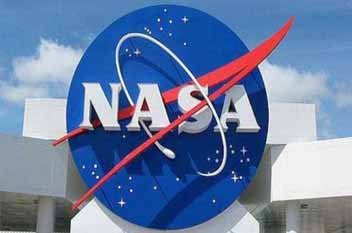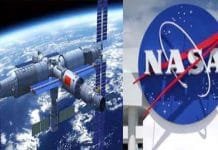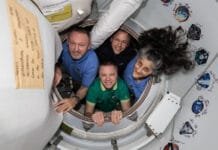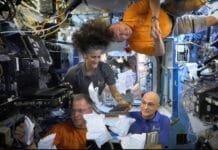NASA’s Artemis Program – The Gateway to Lunar Exploration and Mars
NASA’s Artemis program marks the dawn of a new era in space exploration. After decades of anticipation, humanity is once again preparing to return to the Moon, and this time, the goal is more ambitious than ever before. The Artemis mission is not just about landing astronauts on the lunar surface; it’s a key stepping stone in NASA’s plan for Mars exploration.
In this article, we will explore how the Artemis program is setting the stage for humanity’s next giant leap, including the lunar exploration phase, the technology involved, and how these efforts will eventually lead to missions to Mars and beyond.
1. NASA’s Artemis Program: Reaching New Heights in Space Exploration
The Artemis program, named after the Greek goddess of the Moon, is a bold initiative by NASA to send astronauts back to the lunar surface by 2025. The mission marks the first time since Apollo 17 in 1972 that humans will set foot on the Moon.
Lunar Gateway: Artemis will also lay the groundwork for Lunar Gateway, a space station that will orbit the Moon and serve as a staging point for future missions to Mars. This will help NASA test technologies and systems needed for long-duration space travel.
Sustainability: The key difference between Artemis and previous missions is its focus on sustainable lunar exploration. Unlike the Apollo missions, which were short-term expeditions, Artemis aims to establish a long-term presence on the Moon. The plan is to create a permanent lunar base that will serve as a platform for scientific research, technology testing, and eventually Mars missions.
2. The Path to the Moon: Key Milestones of the Artemis Program
The Artemis program is unfolding in several key stages. Each mission will build on the success of the previous one, with a vision to create a robust, sustainable infrastructure for lunar exploration and prepare for the next giant leap: Mars.
Artemis I (Uncrewed Mission): The first mission, Artemis I, is set to test the new Space Launch System (SLS) rocket and Orion spacecraft. This uncrewed mission will orbit the Moon and return to Earth, setting the stage for crewed missions. The success of Artemis I is critical to ensure the safety and reliability of future crewed space missions.
Artemis II (Crewed Mission to the Moon): Artemis II will be the first crewed mission in the program and will carry astronauts around the Moon in the Orion spacecraft. While this mission won’t land on the Moon, it will serve as a dry run for future landing missions.
Artemis III (Moon Landing): The ultimate goal is to land astronauts on the lunar surface again, and Artemis III will be the mission to achieve this. The crew will land near the lunar South Pole, a location of high scientific interest due to the presence of water ice.
Artemis IV and Beyond (Sustainable Lunar Presence): Following Artemis III, future missions will aim to establish a sustainable human presence on the Moon, using lunar landers and robots to build infrastructure, mine resources, and conduct research for future missions to Mars.
3. What the Artemis Program Means for Humanity’s Journey to Mars
The Artemis program isn’t just about the Moon; it’s about paving the way for human exploration of Mars. The technology and knowledge gained through Artemis missions will directly contribute to NASA’s plans for sending humans to Mars in the 2030s.
Lunar Testing Grounds: The Moon will serve as a testing ground for future Mars missions. Many of the challenges astronauts will face on Mars—such as radiation, prolonged weightlessness, and the need for life-support systems—can be simulated and studied on the Moon, making it an ideal location to test these technologies.
Mars Mission Technology: NASA is already working on the technologies that will be needed to reach Mars, such as advanced life support systems, radiation protection, and surface habitats. These technologies will be tested and refined during the Artemis missions, ensuring that by the time we’re ready for Mars, we have the safest and most efficient systems in place.
Lunar Resources for Mars: The Moon has abundant resources, such as water ice, that can be used for fuel, oxygen, and construction materials. This means that the Moon could become an essential launchpad for future Mars missions, reducing the cost and complexity of space travel.
4. Global Cooperation and the Future of Space Exploration
One of the most exciting aspects of the Artemis program is the potential for international cooperation. NASA has partnered with space agencies from around the world, including the European Space Agency (ESA), the Canadian Space Agency (CSA), and the Japanese Aerospace Exploration Agency (JAXA), to make the Artemis missions a global effort.
This international collaboration will bring together a wealth of expertise and resources, enabling countries to share costs, technologies, and knowledge while working toward a common goal: sustained human presence on the Moon and Mars.
5. The Artemis Legacy: A New Age of Space Travel
The Artemis program is poised to ignite a new age of space exploration, one that will be defined by sustainability, global cooperation, and interplanetary travel. By 2025, NASA aims to land the first woman and the next man on the Moon, paving the way for future generations of astronauts to explore Mars and beyond.
NASA’s Artemis mission represents not only a triumph in space exploration but a bold statement about humanity’s ability to push beyond the known and chart new frontiers in the universe.















